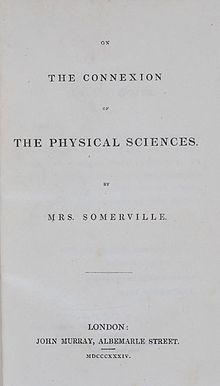History
Before the modern specialization and professionalization of science, there was often little distinction between "science" and "popular science", and works intended to share scientific knowledge with a general reader existed as far back as Greek and Roman antiquity. [1] Without these popular works, much of the scientific knowledge of the era might have been lost. For example, none of the original works of the 4th century BC Greek astronomer Eudoxus have survived, but his contributions were largely preserved due to the didactic poem "Phenomena" written a century later and commented on by Hipparchus. Explaining science in poetic form was not uncommon, and as recently as 1791, Erasmus Darwin wrote The Botanic Garden , two long poems intended to interest and educate readers in botany. Many Greek and Roman scientific handbooks were written for the lay audience, [2] and this "handbook" tradition continued right through to the invention of the printing press, with much later examples including books of secrets such as Giambattista Della Porta's 1558 "Magia Naturalis" and Isabella Cortese's 1561 "Secreti".
The 17th century saw the beginnings of the modern scientific revolution and the consequent need for explicit popular science writing. Although works such as Galileo's 1632 "Il Saggiatore" and Robert Hooke's 1665 "Micrographia" were read by both scientists and the public, [3] [4] Newton's 1687 Principia was incomprehensible for most readers, so popularizations of Newton's ideas soon followed. [5] Popular science writing surged in countries such as France, where books such as Fontenelle's 1686 Conversations on the Plurality of Worlds were best-sellers. [6]
By 1830, astronomer John Herschel had recognized the need for the specific genre of popular science. In a letter to philosopher William Whewell, he wrote that the general public needed "digests of what is actually known in each particular branch of science... to give a connected view of what has been done, and what remains to be accomplished." [7] Indeed, as the British population became not just increasingly literate but also well-educated, there was growing demand for science titles. [8] Mary Somerville became an early and highly successful science writer of the nineteenth century. Her On the Connexion of the Physical Sciences (1834), intended for the mass audience, sold quite well. [9] [10] Arguably one of the first books in modern popular science, it contained few diagrams and very little mathematics. It had ten editions and was translated into multiple languages. It was the most popular science title from the publisher John Murray until On the Origin of Species (1859) by Charles Darwin. [7]
In science and history, consilience is the principle that evidence from independent, unrelated sources can "converge" on strong conclusions. That is, when multiple sources of evidence are in agreement, the conclusion can be very strong even when none of the individual sources of evidence is significantly so on its own. Most established scientific knowledge is supported by a convergence of evidence: if not, the evidence is comparatively weak, and there will probably not be a strong scientific consensus.
Science is a rigorous, systematic endeavor that builds and organizes knowledge in the form of testable explanations and predictions about the world. Modern science is typically divided into three major branches: the natural sciences, which study the physical world; the social sciences, which study individuals and societies; and the formal sciences, which study formal systems, governed by axioms and rules. There is disagreement whether the formal sciences are science disciplines, because they do not rely on empirical evidence. Applied sciences are disciplines that use scientific knowledge for practical purposes, such as in engineering and medicine.
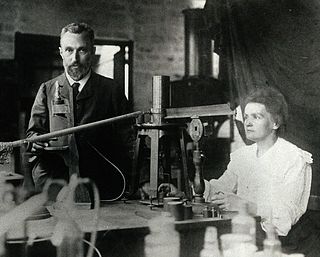
A scientist is a person who researches to advance knowledge in an area of the natural sciences.
Scientific evidence is evidence that serves to either support or counter a scientific theory or hypothesis, although scientists also use evidence in other ways, such as when applying theories to practical problems. Such evidence is expected to be empirical evidence and interpretable in accordance with the scientific method. Standards for scientific evidence vary according to the field of inquiry, but the strength of scientific evidence is generally based on the results of statistical analysis and the strength of scientific controls.
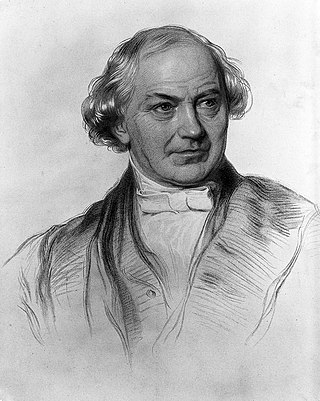
William Whewell was an English polymath, scientist, Anglican priest, philosopher, theologian, and historian of science. He was Master at Trinity College, Cambridge. In his time as a student there, he achieved distinction in both poetry and mathematics.
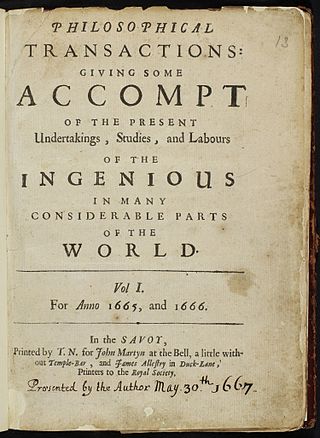
Scientific literature comprises academic papers that report original empirical and theoretical work in the natural and social sciences. Within a field of research, relevant papers are often referred to as "the literature". Academic publishing is the process of contributing the results of one's research into the literature, which often requires a peer-review process.
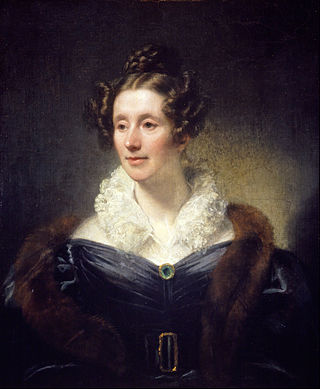
Mary Somerville was a Scottish scientist, writer, and polymath. She studied mathematics and astronomy, and in 1835 she and Caroline Herschel were elected as the first female Honorary Members of the Royal Astronomical Society.
The historiography of science or the historiography of the history of science is the study of the history and methodology of the sub-discipline of history, known as the history of science, including its disciplinary aspects and practices and the study of its own historical development.

A science book is a work of nonfiction, usually written by a scientist, researcher, or professor like Stephen Hawking, or sometimes by a non-scientist such as Bill Bryson. Usually these books are written for a wide audience presumed to have a general education rather than a specifically scientific training, as opposed to the very narrow audience that a scientific paper would have, and are therefore referred to as popular science. As such, they require considerable talent on the part of the author to sufficiently explain difficult topics to people who are totally new to the subject, and a good blend of storytelling and technical writing. In the UK, the Royal Society Prizes for Science Books are considered to be the most prestigious awards for science writing. In the US, the National Book Awards briefly had a category for science writing in the 1960s, but now they just have the broad categories of fiction and nonfiction.
A scientific celebrity or celebrity scientist or public scientist is a scientist who has gained significant public attention, usually through the media. For the general public, scientific celebrities serve to represent science or a field of science. In some instances this can be self-serving in nature or can be at the behest of governmental or corporate interests or to promote the science involved.
Public awareness of science (PAwS) is everything relating to the awareness, attitudes, behaviors, opinions, and activities that comprise the relations between the general public or lay society as a whole to scientific knowledge and organization. This concept is also known as public understanding of science (PUS), or more recently, public engagement with science and technology (PEST). It is a comparatively new approach to the task of exploring the multitude of relations and linkages science, technology, and innovation have among the general public. While early work in the discipline focused on increasing or augmenting the public's knowledge of scientific topics, in line with the information deficit model of science communication, the deficit model has largely been abandoned by science communication researchers. Instead, there is an increasing emphasis on understanding how the public chooses to use scientific knowledge and on the development of interfaces to mediate between expert and lay understandings of an issue. Newer frameworks of communicating science include the dialogue and the participation models. The dialogue model aims to create spaces for conversations between scientists and non-scientists to occur while the participation model aims to include non-scientists in the process of science.
The history of scientific method considers changes in the methodology of scientific inquiry, as distinct from the history of science itself. The development of rules for scientific reasoning has not been straightforward; scientific method has been the subject of intense and recurring debate throughout the history of science, and eminent natural philosophers and scientists have argued for the primacy of one or another approach to establishing scientific knowledge.

Rhetoric of science is a body of scholarly literature exploring the notion that the practice of science is a rhetorical activity. It emerged after a number of similarly oriented topics of research and discussion during the late 20th century, including the sociology of scientific knowledge, history of science, and philosophy of science, but it is practiced most typically by rhetoricians in academic departments of English, speech, and communication.
Scientific writing is writing about science, with an implication that the writing is by scientists and for an audience that primarily includes peers—those with sufficient expertise to follow in detail. Scientific writing is a specialized form of technical writing, and a prominent genre of it involves reporting about scientific studies such as in articles for a scientific journal. Other scientific writing genres include writing literature-review articles, which summarize the existing state of a given aspect of a scientific field, and writing grant proposals, which are a common means of obtaining funding to support scientific research. Scientific writing is more likely to focus on the pure sciences compared to other aspects of technical communication that are more applied, although there is overlap. There is not one specific style for citations and references in scientific writing. Whether you are submitting a grant proposal, literature review articles, or submitting an article into a paper, the citation system that must be used will depend on the publication you plan to submit to.
The American Institute of Biological Sciences (AIBS) is a nonprofit scientific public charitable organization. The organization's mission is to promote the use of science to inform decision-making and advance biology for the benefit of science and society.

The Hedgehog, the Fox, and the Magister's Pox (2003) is Stephen Jay Gould's posthumous volume exploring the historically complex relationship between the sciences and the humanities in a scholarly discourse.
The following outline is provided as a topical overview of science; the discipline of science is defined as both the systematic effort of acquiring knowledge through observation, experimentation and reasoning, and the body of knowledge thus acquired, the word "science" derives from the Latin word scientia meaning knowledge. A practitioner of science is called a "scientist". Modern science respects objective logical reasoning, and follows a set of core procedures or rules to determine the nature and underlying natural laws of all things, with a scope encompassing the entire universe. These procedures, or rules, are known as the scientific method.

Science communication encompasses a wide range of activities that connect science and society. Common goals of science communication include informing non-experts about scientific findings, raising the public awareness of and interest in science, influencing people's attitudes and behaviors, informing public policy, and engaging with diverse communities to address societal problems. The term "science communication" generally refers to settings in which audiences are not experts on the scientific topic being discussed (outreach), though some authors categorize expert-to-expert communication as a type of science communication. Examples of outreach include science journalism and health communication. Since science has political, moral, and legal implications, science communication can help bridge gaps between different stakeholders in public policy, industry, and civil society.

Caroline Y. Robertson-von Trotha is a Scottish sociologist and cultural scientist, working in Germany.

On the Connexion of the Physical Sciences, by Mary Somerville, is one of the best-selling science books of the 19th century. The book went through many editions and was translated into several European languages. It is considered one of the first popular science books, containing few diagrams and very little mathematics. It describes astronomy, physics, chemistry, geography, meteorology and electromagnetism as they were scientifically understood at the time. In a review of the book in March 1834, William Whewell coined the word "scientist".
